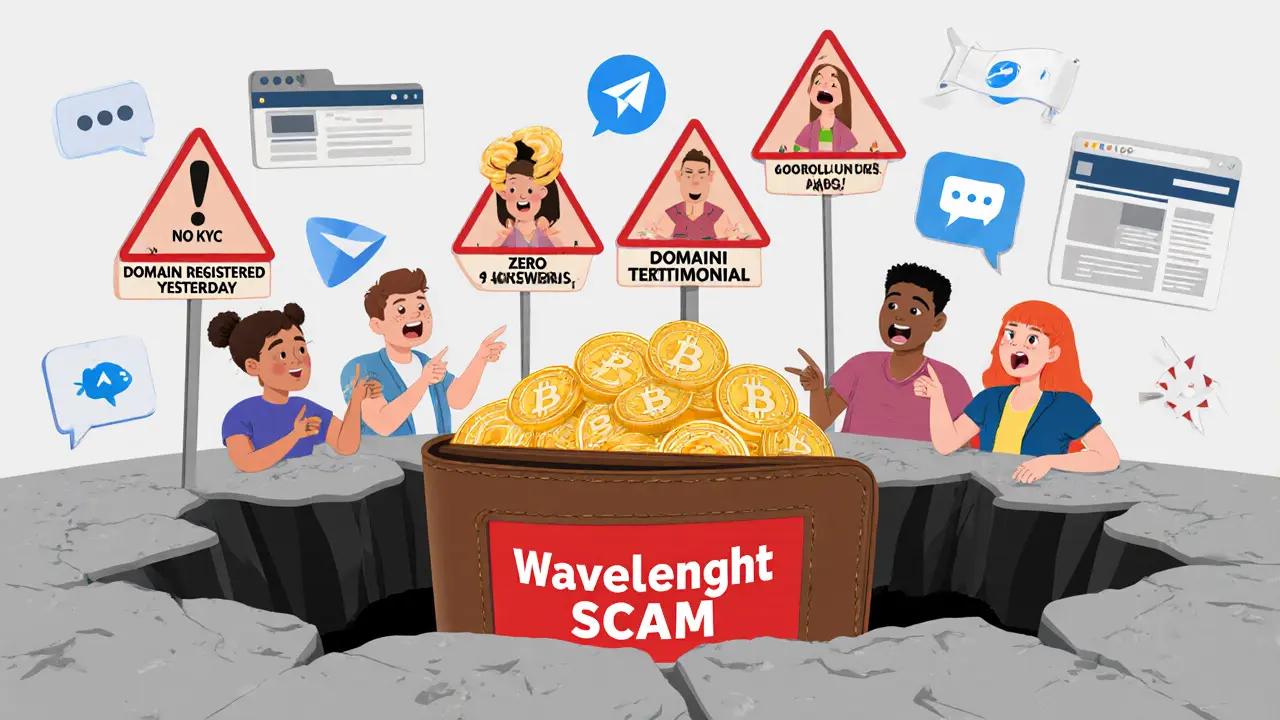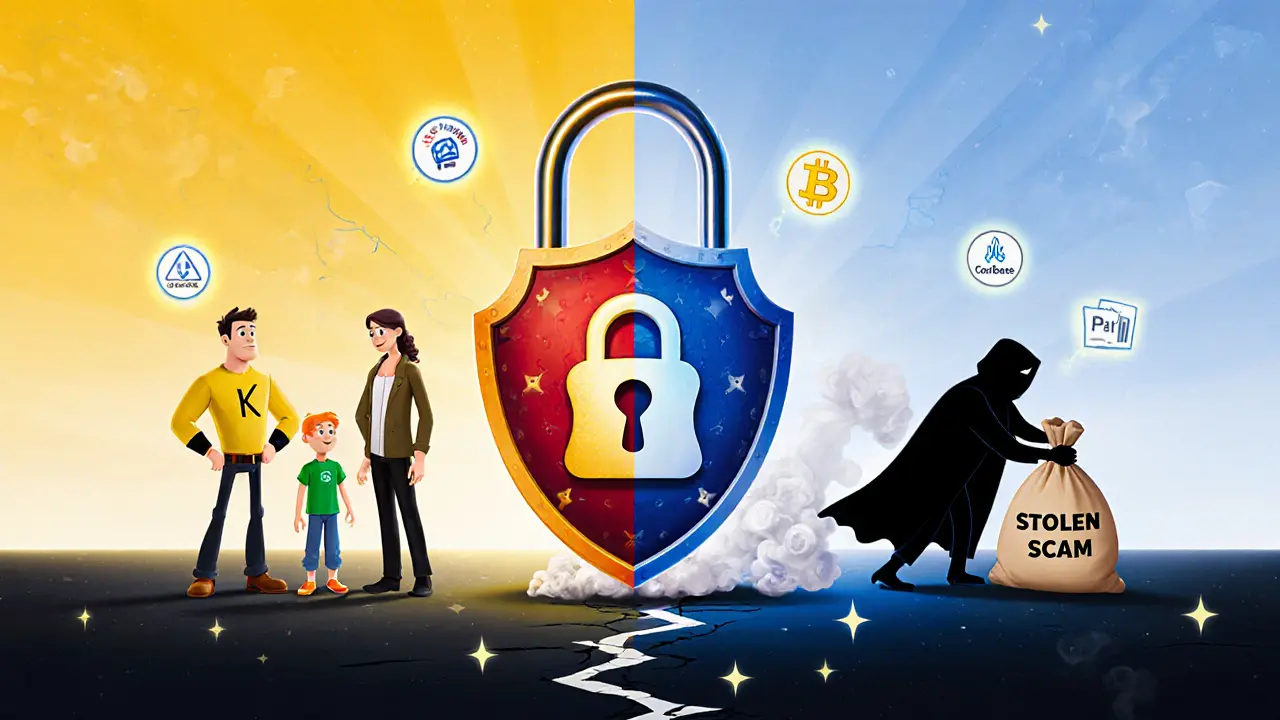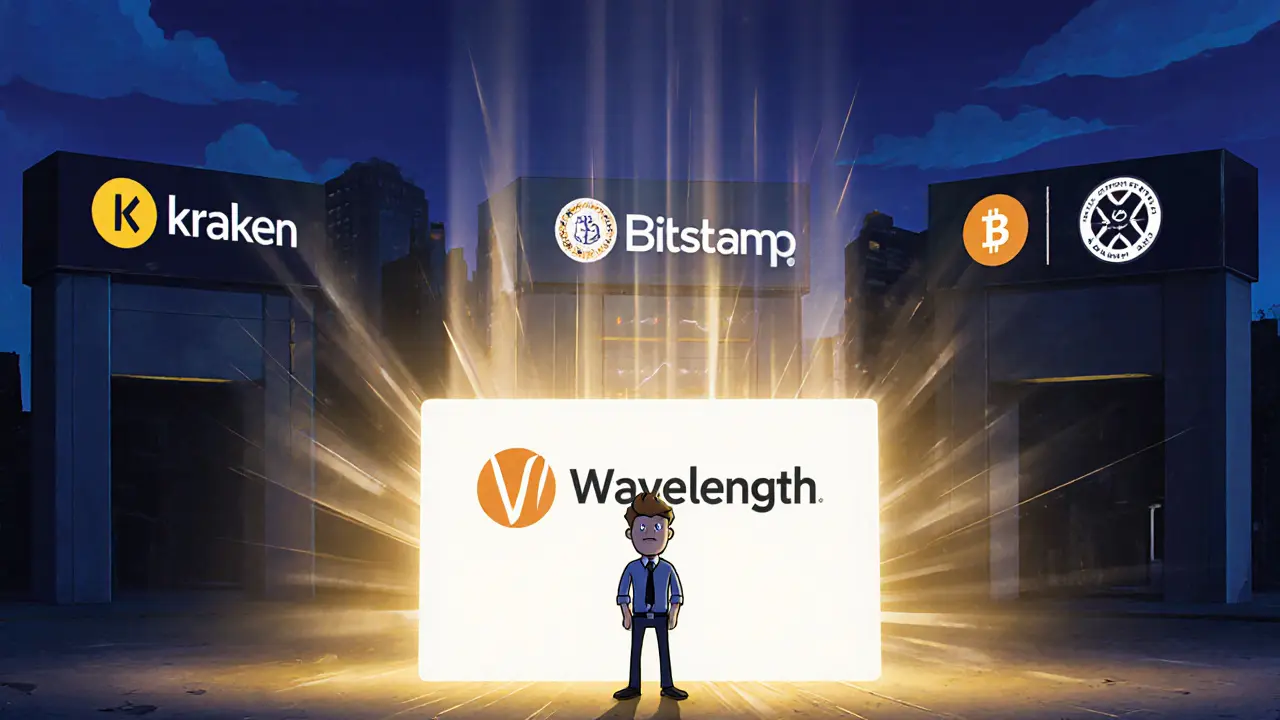Crypto Exchange Scam Risk Checker
Check Exchange Legitimacy
Verify if a crypto exchange matches known scam patterns using industry-standard verification criteria.
If you're searching for a crypto exchange called Wavelength, you might have seen ads, social media posts, or forum threads pushing it as the "next big thing" in trading. But here’s the hard truth: Wavelength crypto exchange doesn't exist as a legitimate, operational platform. There are no official websites, verified apps, regulatory filings, or user reviews from credible sources like Trustpilot, Reddit, or CoinMarketCap. No security audits. No team bios. No customer support channels. Nothing.
Why You Won't Find Wavelength on Any Trusted List
Look at any reputable list of crypto exchanges in 2025-Kraken, Binance, Coinbase, Bitstamp, or even niche players like KuCoin. They all have public security documentation, regulatory licenses, and years of operational history. Kraken, for example, uses cold storage for 95% of user funds, enforces FIDO2-compliant two-factor authentication, and runs a public bug bounty program. These are not marketing buzzwords. These are verifiable practices backed by years of incident response and compliance.Wavelength? Zero public records. No mention in reports from Chainalysis, Arkose Labs, or Techzarinfo-all of which detail security standards used by real exchanges. No press releases. No LinkedIn profiles for its founders. No Twitter account with more than 200 followers. If a platform can’t even show up in a security research paper, it’s not a trading platform. It’s a ghost.
Red Flags That Should Make You Walk Away
Scammers know people want quick profits. They create fake exchange names like Wavelength to look like they’re part of the crowd. Here’s what to watch for:- Too-good-to-be-true promises: "Earn 15% daily returns on BTC!" or "Zero fees for life!"-these are classic bait.
- No domain registration history: Check whois.domaintools.com. If the domain was registered last week under a privacy shield, that’s a red flag.
- Only Telegram or WhatsApp support: Legit exchanges offer email, live chat, and ticket systems-not just encrypted messaging apps.
- No KYC or AML compliance mentioned: Real exchanges verify your identity. If Wavelength skips this, it’s not trying to be legal-it’s trying to disappear.
- Copy-pasted website design: Look closely. If the layout matches other known scam sites, or the "contact us" page has a Gmail address, run.
One user reported losing $8,200 after depositing into a site claiming to be Wavelength. The withdrawal button never worked. The live chat vanished. The site went offline three days later. This isn’t rare. It’s the pattern.
What Happens When You Deposit Into a Fake Exchange?
Crypto transactions are irreversible. Once you send funds to a scam exchange, they’re gone-no chargeback, no recovery team, no insurance. Unlike banks, crypto platforms don’t have FDIC backing. Even Kraken, one of the most secure exchanges, doesn’t guarantee every loss. But at least Kraken has a track record of fighting fraud and working with law enforcement.With Wavelength? There’s no one to call. No legal entity to sue. No jurisdiction to file a complaint with. The whole thing vanishes like smoke.

Real Exchanges Have Transparency. Wavelength Doesn’t.
Legitimate exchanges publish:- Proof of reserves (so you know your BTC is actually stored)
- Security audit reports from firms like CertiK or PeckShield
- Clear terms of service and privacy policies
- Regulatory licenses (FinCEN, FCA, MAS, etc.)
- Public team members with real names and LinkedIn profiles
Wavelength has none of this. Not a single document. Not a single verified source. That’s not an oversight. That’s by design.
What Should You Use Instead?
If you want to trade crypto safely in 2025, stick with platforms that have been tested by time and scrutiny:- Kraken: Best for security-focused traders. Offers cold storage, API key permissions, and 2FA via hardware keys.
- Coinbase: Simple for beginners. Regulated in the U.S. and insured for custodial holdings.
- Binance: High liquidity and low fees. Has faced regulatory challenges but remains one of the largest by volume.
- Bitstamp: One of the oldest exchanges, founded in 2011. Strong compliance and EU licensing.
All of these have been around for years. All have public security records. All have customer support you can actually reach.

How to Protect Yourself From Fake Exchanges
Here’s your quick checklist before you deposit a single dollar:- Search the exchange name + "scam" or "review" on Google. Look for independent forums-not paid testimonials.
- Check if it’s listed on CoinMarketCap or CoinGecko. If it’s not, it’s not real.
- Look for a physical address and legal entity name. Scam sites hide behind offshore shell companies.
- Verify domain age. Use whois.domaintools.com. If it’s less than 6 months old, be extremely cautious.
- Never deposit crypto to an exchange you can’t verify. Use small test deposits first-if it takes more than 24 hours to withdraw, walk away.
There’s no shortcut to safety in crypto. The most secure exchange isn’t the one with the flashiest ads. It’s the one with a public audit, a real team, and a history of protecting users.
Final Word: Don’t Risk Your Funds
Wavelength isn’t a new exchange. It’s a trap. It’s designed to look real so you’ll hand over your crypto before realizing it’s all fake. By the time you figure it out, your funds are already gone-and there’s no way to get them back.Stick to platforms with transparency. Avoid anything that feels rushed, too good to be true, or lacks basic public information. Your crypto isn’t just digital money-it’s your hard-earned value. Don’t let a name like Wavelength steal it.
Is Wavelength crypto exchange real?
No, Wavelength crypto exchange is not real. There are no official websites, verified apps, regulatory licenses, security audits, or credible user reviews for this platform. It does not appear in any industry reports, security analyses, or exchange rankings from 2025. All evidence points to it being a scam.
Why can’t I find Wavelength on CoinMarketCap or CoinGecko?
Legitimate crypto exchanges are listed on CoinMarketCap and CoinGecko after passing verification checks, including proof of liquidity, team identity, and security practices. Wavelength is not listed because it doesn’t meet these basic requirements. If an exchange isn’t on these platforms, treat it as unverified and potentially fraudulent.
Can I recover my money if I sent crypto to Wavelength?
Almost certainly not. Crypto transactions are irreversible by design. Unlike credit cards or bank transfers, there’s no chargeback system. Once your funds are sent to a scam exchange like Wavelength, they are immediately moved to untraceable wallets. Law enforcement rarely recovers these funds, especially when the platform has no legal entity or physical presence.
What are the safest crypto exchanges in 2025?
The safest exchanges in 2025 include Kraken, Coinbase, Bitstamp, and Binance. These platforms use cold storage, multi-factor authentication, regular security audits, and comply with global regulations. Kraken, for example, implements FIDO2-compliant 2FA, API key permissions, and has a public bug bounty program. Always choose exchanges with a proven track record over new, unknown platforms.
How do I spot a fake crypto exchange?
Look for these red flags: no domain history (registered recently), only Telegram/WhatsApp support, promises of high returns, no KYC process, no public team members, and no listing on CoinMarketCap or CoinGecko. Fake exchanges often copy designs from real ones and use fake testimonials. Always verify before depositing any funds.
